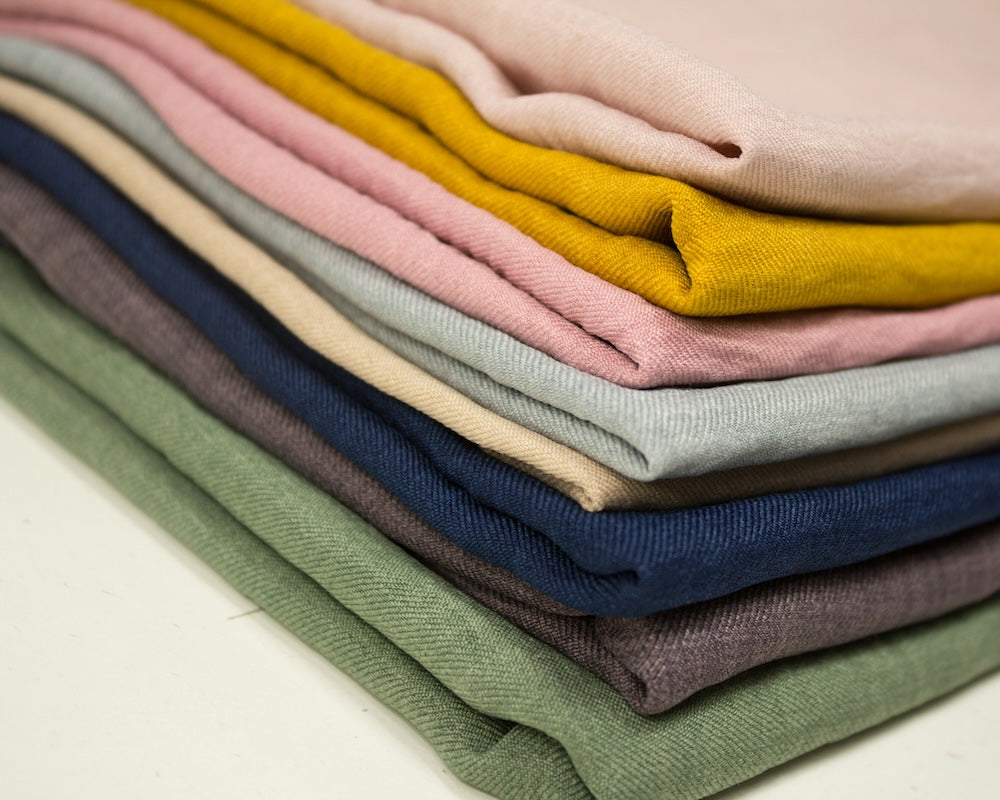In a country as diverse and dynamic as India, where dry heat meets coastal humidity and monsoon downpours give way to crisp winters, choosing the right fabric isn’t just a matter of taste—it’s a matter of comfort, health, and sustainability.
At the heart of this decision lies a fundamental choice: natural fabrics or synthetic ones. And while each has its place in the world of textiles, understanding their strengths, limitations, and impact—especially in the Indian context—can transform the way you build your wardrobe.
Let’s break it down.
What Are Natural Fabrics?
Natural fabrics are made from renewable resources—plant or animal based. These include:
-
Cotton
-
Linen (from flax)
-
Hemp
-
Silk
-
Wool (from sheep or yak, more common in northern climates)
They are breathable, biodegradable, and generally better for your skin—especially in hot, humid conditions.
Key Benefits:
-
Breathable and sweat-absorbent
-
Gentle on the skin, hypoallergenic
-
Biodegradable and compostable
-
Softer with every wear
What Are Synthetic Fabrics?
Synthetic fabrics are derived from petrochemicals and created in labs through polymerisation. Common examples include:
-
Polyester
-
Nylon
-
Acrylic
-
Spandex (Lycra)
These materials are cheaper, wrinkle-resistant, and often used in fast fashion. However, they’re non-biodegradable and can trap heat and moisture.
Key Drawbacks:
-
Poor breathability
-
Prone to retaining body odor
-
Made from fossil fuels
-
Shed microplastics when washed
Fabric Performance in Indian Climates
India’s climatic zones range from hot and dry (Rajasthan), to coastal and humid (Kerala), to temperate highlands (Shimla). What does this mean for your clothes?
Natural Fabrics Win in Heat
-
Cotton: Ideal for dry summers and everyday wear. Breathable, sweat-absorbent, and easy to care for.
-
Linen: Light, airy, and crisp—perfect for tropical zones. It wrinkles easily, but that’s part of its charm.
-
Hemp: Stronger than cotton, naturally UV-resistant, and grows softer with each wash. Excellent for rugged summer wear.
Synthetics Struggle in Humidity
-
Polyester or nylon garments trap sweat and heat, leading to discomfort and odour. Avoid during monsoons or summer unless blended with natural fibres.
Blends Can Offer a Middle Ground
-
Blends like cotton-polyester or hemp-tencel can offer strength and ease of care while still being breathable.
-
Just ensure that the natural fibre dominates the blend (60% or more) to retain comfort.
Sustainability & Skin Health
Beyond weather performance, natural fabrics offer clear advantages for the planet and your body:
-
Biodegradability: Cotton, hemp, and linen return to the soil. Polyester and nylon live on as microplastic pollution.
-
Skin Sensitivity: Synthetics can cause irritation or rashes, especially in hot weather when sweat builds up.
-
Wash & Care: Natural fabrics may require gentle handling, but they don’t release harmful fibers into waterways.
When Synthetics May Have a Place
While natural fabrics are superior for daily wear in India, synthetics have niche applications:
-
Rainwear: Water-resistant nylon or polyester shells are functional for monsoon protection.
-
Specialist gear: Motorcycling jackets requiring a high degree of abrasion resistance and weather proofing.
-
Performance wear: Spandex blends offer stretch for athletic activities, though natural performance alternatives like merino wool and bamboo are emerging.
The Rugged Soul Take: Why We Choose Natural
At The Rugged Soul, we design for comfort, character, and climate. That’s why we use:
-
Cotton canvas and twill for structure and breathability
-
Hemp blends for strength, longevity, and low environmental impact
-
Cotton-linen for airy, lightweight summer wear
Our fabrics are chosen to suit India’s rugged summers, unpredictable rains, and diverse terrain—while aging beautifully over time.
Choose With Intention
Your skin is your largest organ. What you wear touches it all day long. Choosing natural fabrics isn’t just a style decision—it’s a wellness choice, a sustainability pledge, and a statement of intent.
In India’s varied climate, natural fabrics aren’t just the ethical option—they’re the practical one.
So next time you reach for something new, ask yourself: Is this built for the heat? For my skin? For the planet?
If the answer is yes—then you’re already choosing comfort, character, and climate-conscious style.






Share:
Cotton Canvas: The Workhorse Fabric with Timeless Appeal
Cotton Flax: The Natural Choice for Everyday Comfort